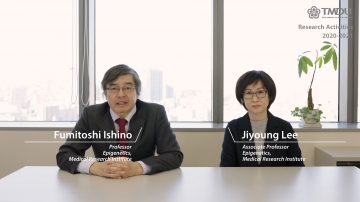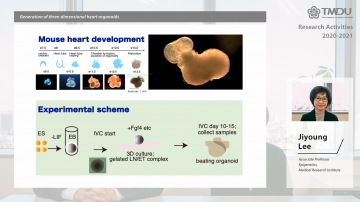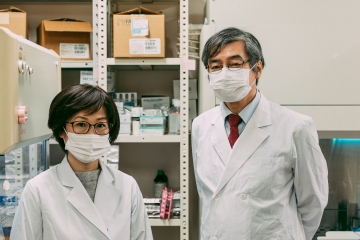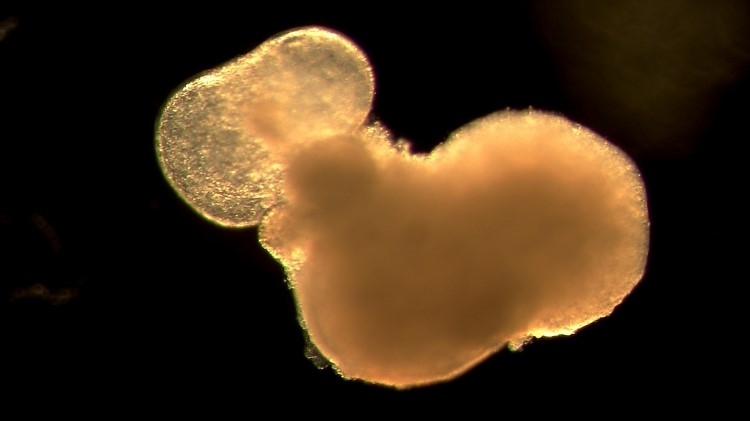Generation of three-dimensional heart organoids

The heart consists of multiple layers of tissue including many different cell types, including working heart muscle, connective tissue cells, and cells that make up blood vessels. These cells work together to ensure a proper functioning of the heart and thus the constant supply of fresh, oxygenated blood to the rest of the body. Studying all forms of heart disease in the laboratory and developing novel drugs to treat these diseases require disease models that closely resemble the actual heart. While effort has been made to generate heart muscle cells in vitro, these cells present as clumps without the tissue organization seen in vivo.

To achieve their goal, the researchers looked into the factors involved in heart development in vivo and speculated that the protein fibroblast growth factor 4 (FGF4) and a complex consisting of the proteins laminin and entactin (LN/ET complex), all of which are known are expressed in the embryonic heart, are necessary and sufficient to enable structural similarity between the heart organoids and the actual embryonic heart. Indeed, mouse embryonic stem cells exposed to FGF4 and LN/ET showed considerable similarity to the developing heart based on structural as well as molecular analyses.

Intriguingly , the process of development in the heart organoids closely reflected the morphological changes during embryonic heart development in vivo. A closer look at the cellular components making up the heart organoids revealed that cells of the embryonic heart, including cells of all four chambers as well as of the conduction system, were present in the structural organization seen during embryonic development. Importantly, the heart organoids possessed functional properties close to their in vivo-counterpart.

“These are striking results that show how our method provides a biomimetic model of the developing heart using a rather simple protocol. This tool could be helpful in studying the molecular processes during heart development, and in developing and testing novel drugs against heart disease,” say Professors Lee and Ishino.

Heart organoid generated from mouse ES cells
Paper Information
In vitro generation of functional murine heart organoids via FGF4 and extracellular matrix
Jiyoung Lee, Akito Sutani, Rin Kaneko, Jun Takeuchi, Tetsuo Sasano, Takashi Kohda, Kensuke Ihara, Kentaro Takahashi, Masahiro Yamazoe, Tomohiro Morio, Tetsushi Furukawa, Fumitoshi Ishino
Publication: Nature Communications, 2020 Sep 3;11(1):4283.
Publication Date: Published online 14 September 2020 DOI: 10.1038/s41467-020-18031-5
Jiyoung Lee, Akito Sutani, Rin Kaneko, Jun Takeuchi, Tetsuo Sasano, Takashi Kohda, Kensuke Ihara, Kentaro Takahashi, Masahiro Yamazoe, Tomohiro Morio, Tetsushi Furukawa, Fumitoshi Ishino
Publication: Nature Communications, 2020 Sep 3;11(1):4283.
Publication Date: Published online 14 September 2020 DOI: 10.1038/s41467-020-18031-5
Correspondence to
Fumitoshi ISHINO, Professor
E-mail: fishino.epgn(at)mri.tmd.ac.jp
Jiyoung Lee, Associate Professor
E-mail: jlee.epgn(at)mri.tmd.ac.jp
Department of Epigenetics
Medical Research Institute
Tokyo Medical and Dental University(TMDU)
*Please change (at) in e-mail addresses to @ on sending your e-mail to contact personnels.
E-mail: fishino.epgn(at)mri.tmd.ac.jp
Jiyoung Lee, Associate Professor
E-mail: jlee.epgn(at)mri.tmd.ac.jp
Department of Epigenetics
Medical Research Institute
Tokyo Medical and Dental University(TMDU)
*Please change (at) in e-mail addresses to @ on sending your e-mail to contact personnels.

